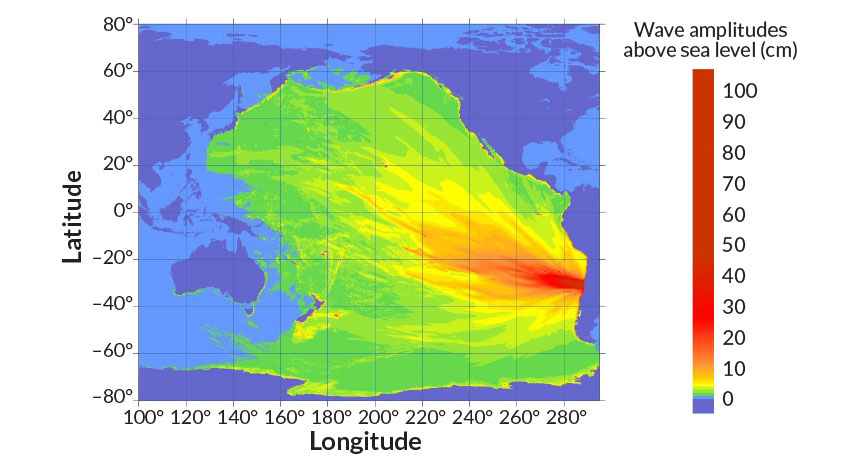
WAVE RACE A magnitude 8.3 earthquake struck September 16 off the coast of Chile, triggering a tsunami that radiated across the Pacific Ocean (projected here using existing methods). The event proved an unexpected test of new numerical calculations that can provide faster tsunami predictions.
National Tsunami Warning Center/NOAA